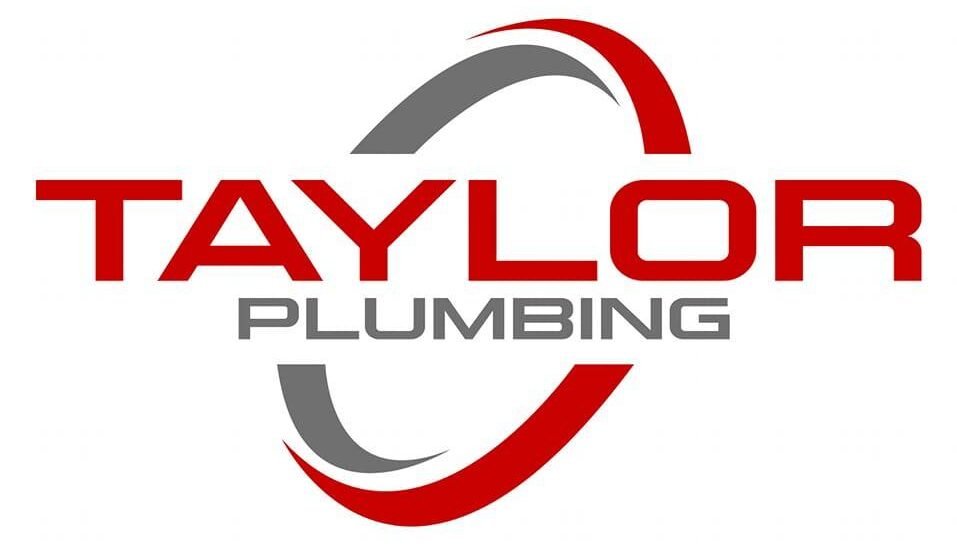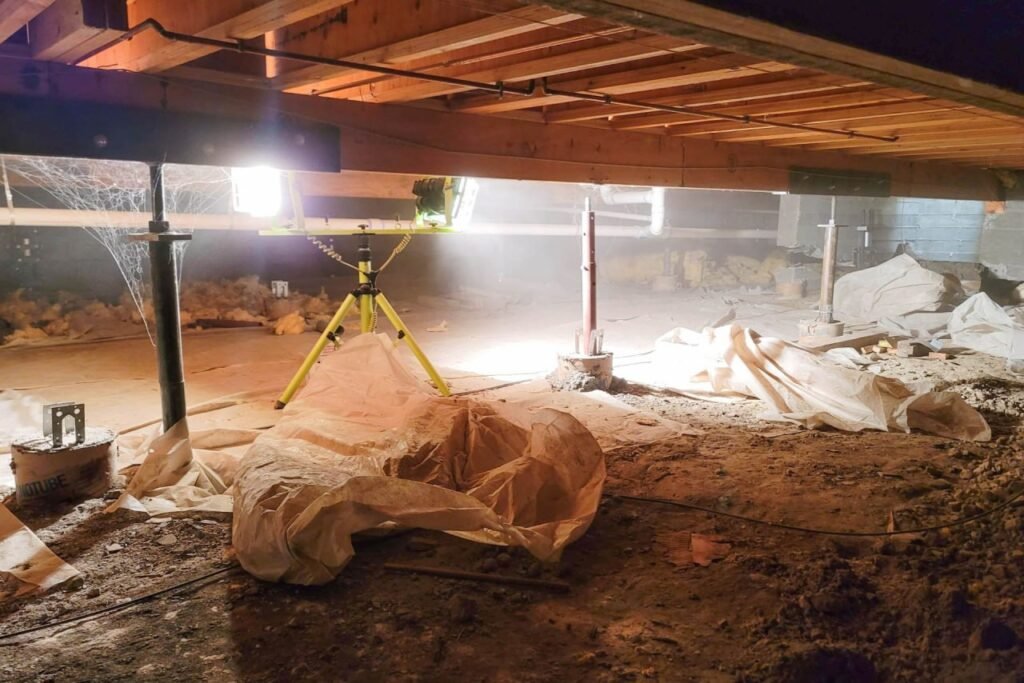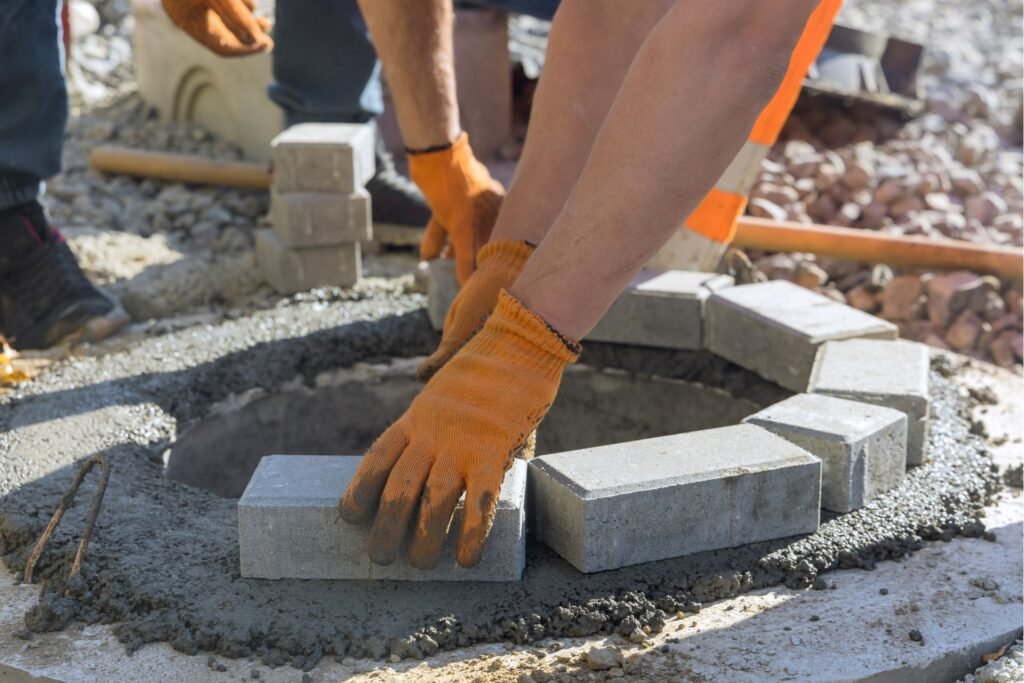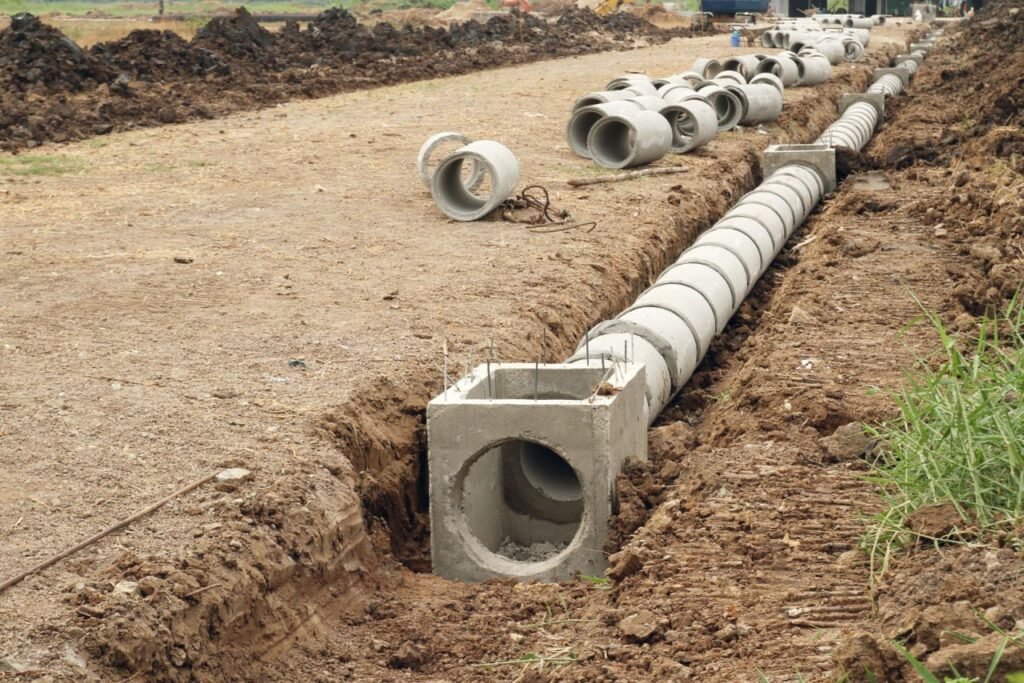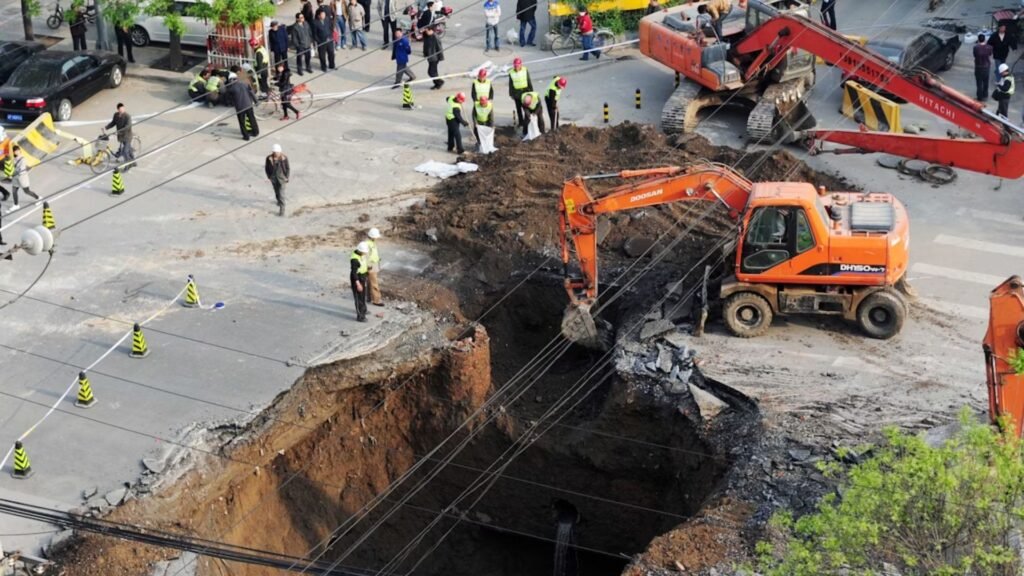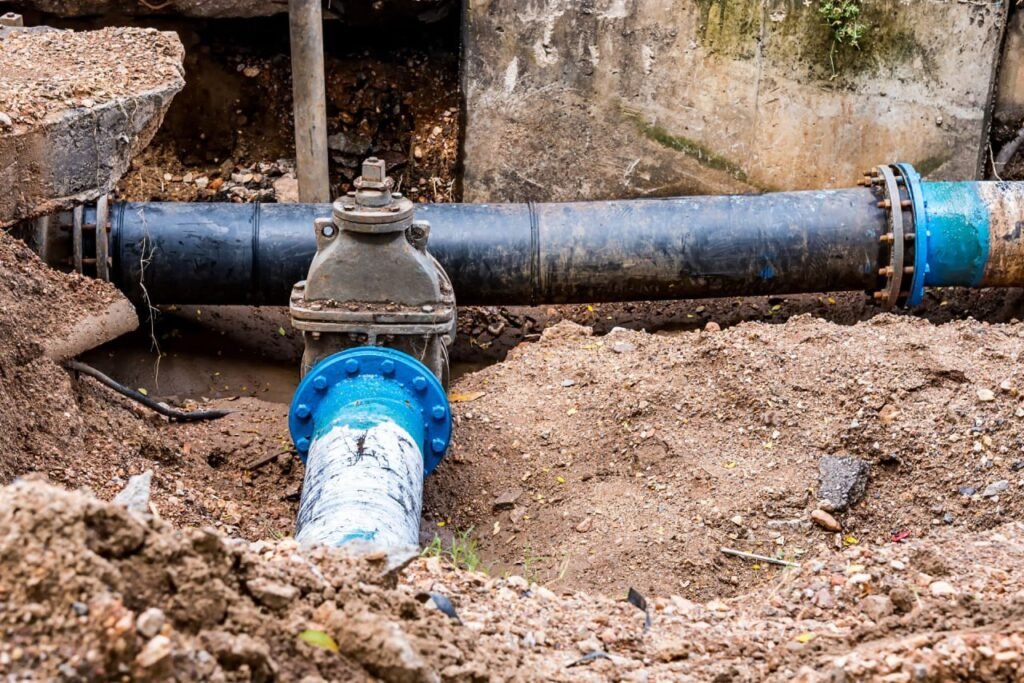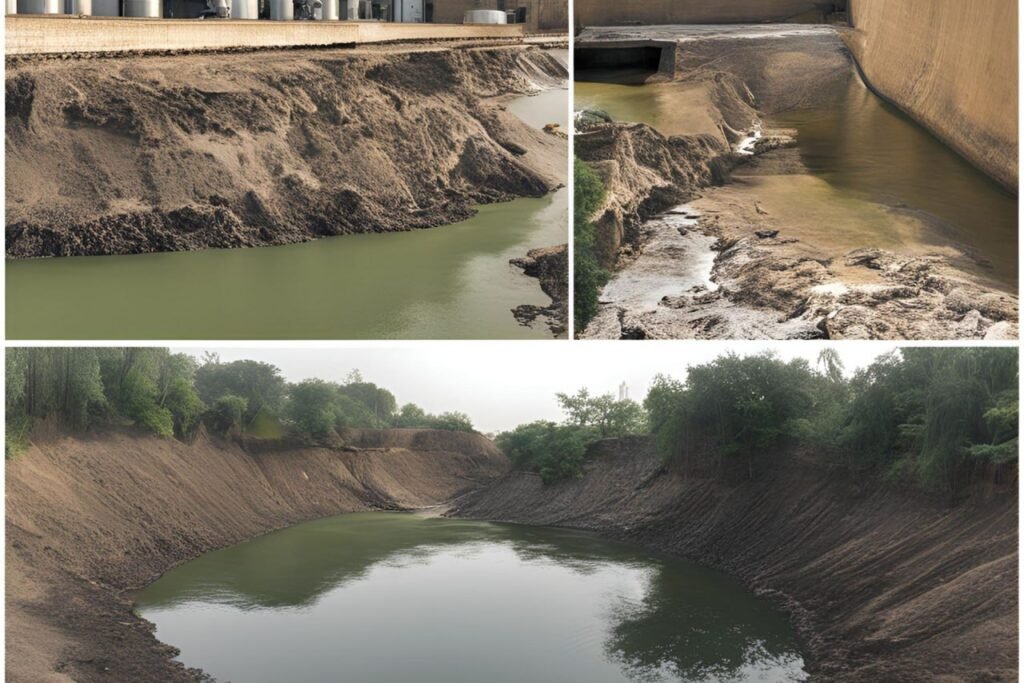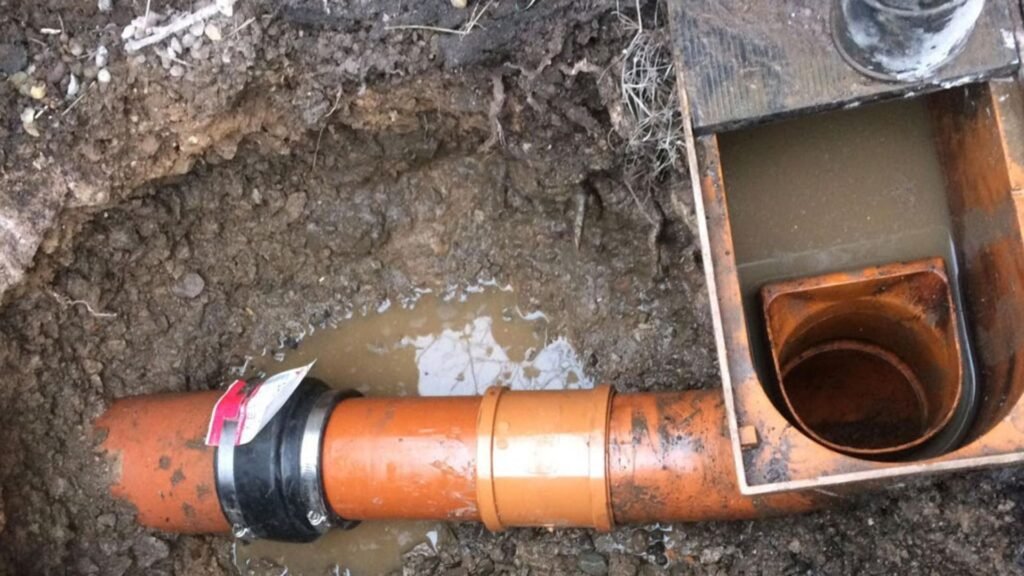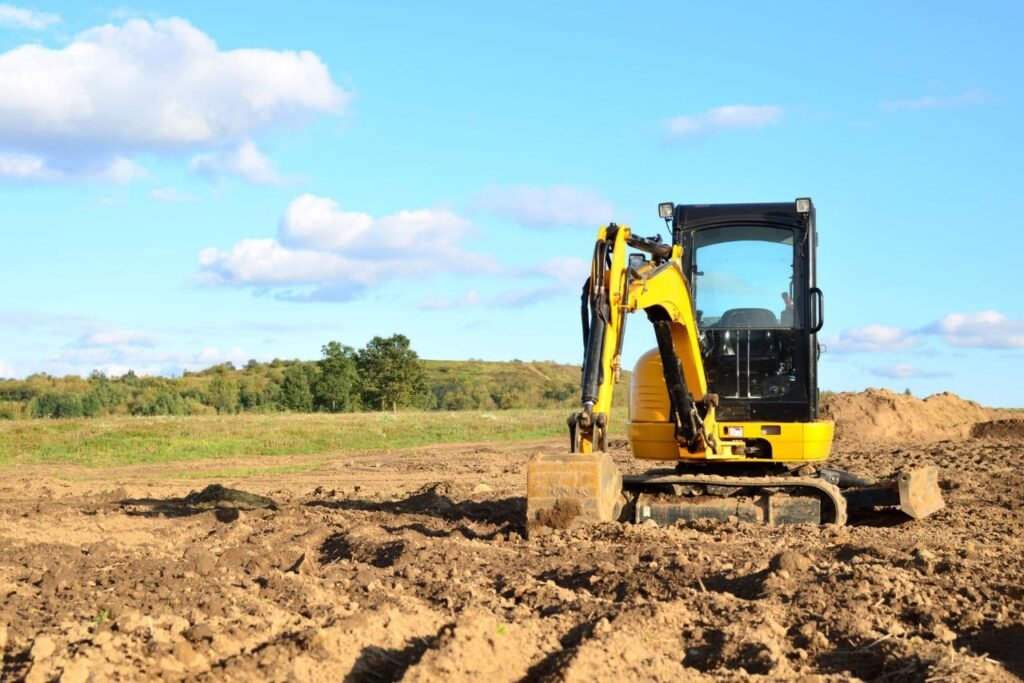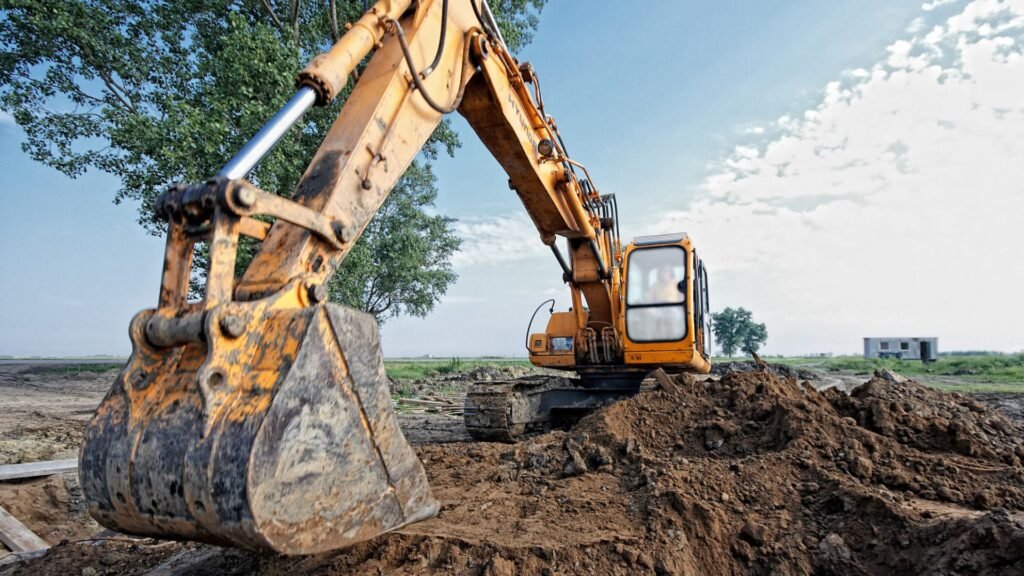Welcome to our comprehensive guide on understanding the costs associated with crawl space foundation repairs in New Zealand. Maintaining a healthy foundation is essential for the structural integrity and overall health of your home, yet many homeowners often overlook the crawl space until issues arise. In this post, we will explore common problems that necessitate repairs, the various factors influencing costs, and provide a detailed breakdown of expenses you might expect. Whether you’re facing water damage, structural issues, or simply seeking to understand potential costs, this guide is here to help you make informed decisions and ensure your home’s foundation remains strong and secure.
On average, the cost of crawl space foundation repair in NZ ranges from $1,000 for minor repairs to over $10,000 for major structural work. Factors affecting these costs include the extent of damage, type of repair required, accessibility, and additional services like waterproofing or insulation. To get an accurate quote, it’s essential to obtain multiple inspections and consult with professional contractors. Regular maintenance and early intervention can help keep these repair costs manageable.
- What Is A Crawl Space Foundation?
- Common Issues Requiring Crawl Space Foundation Repair
- Factors Influencing Crawl Space Foundation Repair Costs In NZ
- Average Cost Breakdown
- How To Get An Accurate Quote
- DIY Vs. Professional Repair
- Tips For Reducing Crawl Space Repair Costs
- Financing Options For Crawl Space Foundation Repairs
- Real-Life Case Studies
- FAQs: About The Crawl Space Foundation Repair Cost In NZ
- Conclusion
What Is A Crawl Space Foundation?
Definition and Purpose of Crawl Space Foundations
A crawl space foundation is a type of construction that elevates a building slightly off the ground, typically by about 18 inches to four feet. This space, often referred to as a crawl space, lies between the ground and the first floor of the building. The primary purpose of this design is to promote better air circulation beneath the house, which helps prevent moisture buildup that can lead to mold and rot. Additionally, crawl spaces provide easy access to plumbing, electrical wiring, and other utility systems, making maintenance and repairs more straightforward and less intrusive compared to slab foundations.
Common Problems Associated with Crawl Space Foundations
While crawl spaces offer several advantages, they are not without their challenges. One common issue is moisture accumulation. Without proper ventilation, moisture from the ground can seep into the crawl space, leading to mold growth and wood rot. This damp environment can also attract pests such as termites, rodents, and insects, which can cause further damage to the structure. Another frequent problem is poor insulation. If a crawl space is not adequately insulated, it can lead to higher energy bills and uncomfortable living conditions due to temperature fluctuations. Additionally, structural issues can arise if the foundation is not correctly maintained, potentially compromising the integrity of the entire building.
Why Maintaining a Crawl Space Foundation is Crucial
Maintaining a crawl space foundation is essential for several reasons. First and foremost, it ensures the longevity and structural integrity of your home. Regular inspections and maintenance can help identify and address issues such as moisture buildup, pest infestations, and structural weaknesses before they escalate into more significant problems. By keeping the crawl space dry and well-ventilated, you can prevent mold growth and wood rot, which can be costly and time-consuming to repair. Proper insulation and sealing can also improve energy efficiency, leading to lower utility bills and a more comfortable living environment. Furthermore, a well-maintained crawl space provides safe and easy access to essential utilities, making any necessary repairs or upgrades more manageable and less disruptive. In essence, proactive crawl space maintenance is a vital aspect of homeownership that protects your investment and ensures a safe, healthy living space for you and your family.

Common Issues Requiring Crawl Space Foundation Repair
Crawl space foundations, while offering certain benefits, are also susceptible to various issues that can necessitate repairs. Understanding these common problems is essential for maintaining a safe and stable home. Let’s delve into some of the most frequent issues that require crawl space foundation repair.
Water Damage and Moisture Problems
One of the most prevalent problems in crawl spaces is water damage and excessive moisture. Crawl spaces are often vulnerable to water seepage due to poor drainage, plumbing leaks, or high groundwater levels. When water accumulates in the crawl space, it can lead to several complications:
1. Wood Rot: Prolonged exposure to moisture can cause wooden beams and joists to rot, compromising the structural integrity of the foundation.
2. Rust and Corrosion: Metal components, such as pipes and fasteners, can rust and corrode, leading to further structural issues.
3. Insulation Damage: Moisture can damage insulation, reducing its effectiveness and leading to higher energy bills.
4. Increased Humidity: High humidity levels can create an environment conducive to mold and mildew growth, which we’ll discuss further below.
Addressing water damage and moisture problems promptly is crucial to prevent more severe issues and maintain a healthy living environment.
Structural Damage (e.g., Cracks, Sinking)
Structural damage in crawl space foundations is another significant concern that often requires repair. Over time, various factors can contribute to the weakening of the foundation, leading to:
1. Cracks in Foundation Walls: These can occur due to soil movement, settling, or hydrostatic pressure. Cracks can allow water to infiltrate the crawl space, exacerbating moisture problems.
2. Sinking or Uneven Floors: When the soil beneath the foundation shifts or erodes, it can cause sections of the foundation to sink or become uneven. This can lead to noticeable dips or slopes in the floors above.
3. Sagging Beams and Joists: Structural damage can cause beams and joists to sag or bow, leading to uneven floors and potentially dangerous conditions.
It’s essential to address structural damage early to prevent more extensive and costly repairs in the future.
Pest Infestations and Their Impact on the Foundation
Crawl spaces are attractive to various pests, including rodents, termites, and other insects. These pests can cause significant damage to the foundation in several ways:
1. Rodent Damage: Rodents can chew through insulation, wiring, and wood, causing structural damage and potential fire hazards.
2. Termite Infestations: Termites feed on wood, and a termite infestation can severely weaken wooden beams and joists, compromising the stability of the foundation.
3. Other Insects: Carpenter ants and other insects can also cause damage to the wooden components of the crawl space.
Implementing pest control measures and conducting regular inspections can help prevent infestations and mitigate their impact on the foundation.
Mold and Mildew Growth
Mold and mildew thrive in damp, dark environments, making crawl spaces an ideal breeding ground. The presence of mold and mildew can lead to several problems:
1. Health Risks: Mold spores can circulate throughout the home, potentially causing respiratory issues and other health problems for the occupants.
2. Structural Damage: Mold can weaken wood and other materials, leading to structural deterioration over time.
3. Unpleasant Odors: Mold and mildew growth can produce musty odors that permeate the living areas above the crawl space.
Addressing mold and mildew growth involves controlling moisture levels, improving ventilation, and potentially using mold remediation techniques to ensure a healthy and safe environment.
Understanding these common issues requiring crawl space foundation repair is vital for homeowners looking to maintain their property’s integrity and safety. Regular inspections, timely repairs, and preventive measures can help mitigate these problems, ensuring a stable and healthy living environment. By addressing water damage, structural issues, pest infestations, and mold growth promptly, homeowners can avoid more severe and costly repairs in the future.

Factors Influencing Crawl Space Foundation Repair Costs In NZ
When it comes to crawl space foundation repair costs in New Zealand, several key factors come into play. Understanding these elements can help homeowners better anticipate expenses and make informed decisions. Here, we’ll break down the primary factors that influence these costs:
The extent of Damage: Minor vs. Major Repairs
The extent of the damage in your crawl space is perhaps the most significant factor affecting repair costs. Minor repairs, such as fixing small cracks or addressing minimal water damage, typically cost less. These might involve simple patching or sealing work that can be completed relatively quickly and inexpensively. On the other hand, major repairs, such as extensive structural damage or severe water intrusion, can be much more costly. Major repairs often require comprehensive solutions like replacing large sections of the foundation, extensive waterproofing, or even structural reinforcement. The more severe the damage, the more labor, materials, and time will be required, leading to higher costs.
Type of Repair Needed: Waterproofing, Structural Reinforcement, Pest Control, etc.
The specific type of repair needed also plays a crucial role in determining costs. Different issues require different solutions, each with its associated expenses. For instance:
- Waterproofing: If water intrusion is a problem, waterproofing measures like installing drainage systems, sump pumps, or vapor barriers might be necessary. These solutions can vary in cost depending on the extent of the moisture problem and the specific systems used.
- Structural Reinforcement: For foundations showing signs of structural instability, reinforcing measures like installing steel beams or underpinning may be required. These are typically more labor-intensive and expensive due to the complexity of the work.
- Pest Control: If pests have damaged the crawl space, pest control and subsequent repairs to any structural damage they caused will be necessary. This can add to the overall repair costs.
Materials and Labor Costs: Local Labor Rates, Material Costs in NZ
Materials and labor costs are significant components of any repair job. In New Zealand, local labor rates can vary depending on the region and the availability of skilled professionals. For instance, labor costs might be higher in urban areas like Auckland compared to more rural regions. Additionally, the cost of materials can fluctuate based on market conditions, availability, and the specific products required for the job. High-quality materials will typically cost more but can offer better long-term durability and performance.
Accessibility: Ease of Access to the Crawl Space
The accessibility of your crawl space can significantly impact the cost of repairs. If the crawl space is easily accessible, it’s simpler and quicker for workers to carry out necessary repairs, which can reduce labor costs. However, if the crawl space is difficult to access, whether due to its location, size, or other obstructions, it can increase the time and effort required to complete the work. This can lead to higher labor costs and potentially the need for specialized equipment.
Additional Services: Insulation, Ventilation, etc.
Finally, additional services that might be needed as part of the repair process can also influence costs. For instance, if your crawl space requires new insulation to improve energy efficiency or ventilation to prevent future moisture problems, these services will add to the overall expense. While these additional services can increase the upfront costs, they often provide long-term benefits by preventing future issues and improving the overall health of your home.
In summary, the cost of crawl space foundation repairs in New Zealand is influenced by a variety of factors, including the extent of the damage, the type of repairs needed, materials and labor costs, accessibility, and any additional services required. By understanding these factors, homeowners can better prepare for the potential costs and ensure they make informed decisions about their repair needs.

Average Cost Breakdown
When planning for crawl space foundation repairs in New Zealand, understanding the average cost breakdown is essential. This helps homeowners budget effectively and ensures they are prepared for any potential expenses that might arise during the repair process. Here’s a detailed explanation of the various components involved in the cost breakdown:
Inspection Costs
Before any repair work begins, a thorough inspection and assessment of the crawl space foundation are necessary. This initial inspection typically involves a professional evaluating the condition of the foundation, identifying any existing or potential issues, and recommending the appropriate repair solutions. On average, the inspection costs can range from $150 to $300, depending on the complexity and size of the crawl space. This fee covers the time and expertise of the inspector and often includes a detailed report outlining the findings and suggested next steps.
Basic Repairs
Minor repairs are usually the next step after the initial inspection. These repairs address smaller issues that, if left unattended, could lead to more significant problems. Basic repairs might include sealing small cracks, reinforcing weak spots, and fixing minor water leaks. The average cost for basic repairs can vary widely but typically falls between $500 and $1,500. The exact price will depend on the extent of the damage and the materials needed to complete the repairs.
Major Repairs
For more severe structural issues, major repairs are necessary. These repairs often involve extensive work to stabilize and reinforce the foundation, such as underpinning, replacing damaged beams, and addressing significant moisture problems. Major repairs are more costly, with average prices ranging from $5,000 to $15,000 or more. The final cost will depend on the severity of the damage, the methods used for repair, and the size of the crawl space.
Waterproofing and Moisture Control
Waterproofing and moisture control are critical components of crawl space foundation repair. Ensuring the area is properly sealed and protected from moisture is essential to prevent future damage and maintain the foundation’s integrity. Waterproofing involves installing vapor barriers, sealing cracks and openings, and sometimes installing sump pumps or drainage systems. The cost for waterproofing and moisture control can range from $2,000 to $6,000, depending on the specific measures required and the size of the crawl space.
Additional Services
In addition to the primary repair and waterproofing work, homeowners might need additional services to ensure their crawl space is fully protected and functional. These services can include insulation, ventilation, and pest control. Proper insulation helps regulate temperature and prevent moisture buildup, while adequate ventilation ensures good air circulation and reduces the risk of mold and mildew. Pest control might be necessary to eliminate any infestations that could compromise the integrity of the foundation. The cost for these additional services can vary, but on average, homeowners can expect to pay between $1,000 and $3,000 for comprehensive insulation and ventilation solutions.
Understanding the average cost breakdown for crawl space foundation repairs helps homeowners in New Zealand plan and budget effectively. By considering the inspection costs, basic and major repairs, waterproofing and moisture control, and any additional services, homeowners can ensure their crawl space foundation remains strong and resilient. Proper maintenance and timely repairs not only protect the structural integrity of the home but also contribute to a healthier living environment.

How To Get An Accurate Quote
When planning any home improvement or construction project, obtaining an accurate quote is crucial to ensure your budget aligns with the anticipated expenses. Here’s a detailed guide on how to get the most precise quote for your project:
Importance of Getting Multiple Quotes
One of the most effective ways to ensure you receive a fair and accurate quote is to gather multiple estimates from different contractors. This approach offers several benefits:
1. Price Comparison: By comparing quotes, you can identify any outliers that are significantly higher or lower than the others. This can help you spot potential red flags, such as a contractor who may be underbidding to win the job but might cut corners or surprise you with additional costs later.
2. Scope of Work: Different contractors might interpret the project requirements differently. Multiple quotes will give you a clearer picture of the scope of work and help ensure all aspects of the job are covered.
3. Market Insight: Gathering various quotes provides insight into the market rate for your specific project. This knowledge can be empowering when negotiating with contractors.
What to Look for in a Contractor
Choosing the right contractor is as important as getting a good price. Here are key factors to consider:
1. Experience and Expertise: Look for contractors with a proven track record in similar projects. Ask for examples of past work and references from previous clients.
2. Licensing and Insurance: Ensure the contractor is properly licensed and insured. This protects you from liability in case of accidents or damage during the project.
3. Reputation: Research online reviews and ratings. A contractor with positive feedback and a good reputation is likely to be reliable and professional.
4. Communication: Choose a contractor who communicates clearly and promptly. Good communication is essential for a smooth project execution and to address any concerns that may arise.
5. Detailed Quote: A good contractor will provide a detailed quote that outlines all costs, including labor, materials, and any potential additional expenses. This transparency helps prevent unexpected charges.
Questions to Ask During the Inspection and Quote Process
When meeting with contractors for an inspection and quote, asking the right questions can make a significant difference. Here are some essential questions to consider:
1. What is included in the quote?: Ensure the quote covers all aspects of the project, including materials, labor, permits, and any additional fees.
2. What is the estimated timeline?: Understanding the project timeline helps you plan accordingly and sets clear expectations.
3. How will changes be handled?: Ask about the process for managing changes to the project scope and how additional costs will be communicated and approved.
4. What is your payment schedule?: Clarify the payment terms, including any deposits required and the schedule for subsequent payments.
5. Do you have references?: Request references from previous clients to get firsthand accounts of their experience with the contractor.
6. What is your approach to project management?: Understanding how the contractor manages projects, including oversight and quality control, can give you confidence in their ability to deliver a successful outcome.
By following these steps, you can ensure you receive accurate quotes and select a contractor who will deliver quality work within your budget. Taking the time to thoroughly vet contractors and ask the right questions will pay off in the long run, resulting in a smoother and more satisfactory project experience.

DIY Vs. Professional Repair
Pros and Cons of DIY Repairs
When considering whether to tackle foundation repairs on your own, it’s important to weigh the benefits and drawbacks.
Pros
1. Cost Savings: One of the most significant advantages of DIY repairs is the potential for cost savings. You can often avoid labor costs, which can be substantial.
2. Learning Experience: DIY repairs can be a great way to learn new skills and gain a better understanding of your home’s foundation and overall structure.
3. Flexibility: Doing it yourself allows you to work on your schedule without having to coordinate with a professional’s availability.
Cons
1. Skill and Knowledge Requirements: Foundation repairs can be complex and require specific skills and knowledge. A lack of expertise can lead to mistakes, potentially causing more damage.
2. Time-Consuming: DIY repairs can take a significant amount of time, especially if you’re learning as you go. This could be challenging if you have a busy schedule.
3. Risk of Inadequate Repairs: Without professional tools and experience, there’s a risk that the repairs may not be done correctly, leading to recurring issues.
When to Consider Professional Help
Certain situations warrant the expertise of a professional to ensure the job is done correctly and safely:
1. Severe Damage: If your foundation issues are extensive, such as large cracks, significant settling, or structural instability, it’s best to call a professional.
2. Lack of Tools and Equipment: Professional repairs often require specialized tools and equipment that most homeowners don’t have.
3. Peace of Mind: Hiring a professional can provide peace of mind that the repairs are done correctly, reducing the risk of future problems and potentially increasing your home’s value.
Cost Comparison Between DIY and Professional Services
Understanding the cost differences between DIY and professional repairs can help you make an informed decision:
1. Materials and Tools: For DIY repairs, you’ll need to purchase materials and possibly rent or buy tools, which can add up quickly. Professionals often have access to materials at a lower cost and come equipped with the necessary tools.
2. Labor Costs: The most significant expense for professional repairs is labor. While this can be costly, it includes the expertise and experience that professionals bring to the job.
3. Long-Term Costs: DIY repairs that aren’t done correctly can lead to more significant issues down the line, potentially costing more in future repairs. Professional repairs might be more expensive upfront but can save money in the long run by preventing recurring problems.
In conclusion, deciding between DIY and professional foundation repairs involves considering your skills, the severity of the issue, and the potential long-term costs. While DIY can be a cost-effective and rewarding approach for minor issues, professional help is often the best choice for ensuring the stability and safety of your home’s foundation.

Tips For Reducing Crawl Space Repair Costs
Regular Maintenance to Prevent Major Issues
One of the most effective ways to keep crawl space repair costs down is through regular maintenance. By consistently monitoring and maintaining your crawl space, you can identify potential problems before they escalate into major issues. This can include checking for signs of moisture, ensuring proper ventilation, and looking out for any structural damage. Regular maintenance helps you catch minor issues early, saving you from expensive repairs down the line.
Addressing Problems Early
When it comes to crawl space repairs, addressing problems as soon as they arise can significantly reduce costs. Small issues, such as minor cracks or slight dampness, can often be fixed with minimal expense. However, if these issues are left unattended, they can develop into more serious problems that require extensive and costly repairs. By taking immediate action when you notice a problem, you can prevent it from worsening and avoid hefty repair bills.
Using Cost-Effective Materials
Choosing cost-effective materials for your crawl space repairs can also help keep expenses manageable. While it might be tempting to opt for the cheapest materials available, it’s important to consider their durability and effectiveness. Sometimes, spending a little more on high-quality, cost-effective materials can save you money in the long run by reducing the need for frequent repairs. For example, using a high-quality vapor barrier can prevent moisture problems and extend the life of your crawl space.
Considerations for Long-Term Savings vs. Short-Term Costs
When planning crawl space repairs, it’s essential to weigh the long-term savings against the short-term costs. While some repairs might seem expensive initially, they can provide significant savings over time by preventing future issues. For instance, investing in proper insulation and moisture control can reduce energy costs and prevent structural damage. It’s important to consider the long-term benefits and savings that can result from quality repairs and maintenance, rather than just focusing on the immediate expense.
By following these tips, you can effectively reduce the costs associated with crawl space repairs. Regular maintenance, early problem detection, the use of cost-effective materials, and long-term savings are all key strategies in managing your crawl space repair expenses. Taking a proactive approach not only helps in maintaining the integrity of your home but also ensures that you are not faced with unexpected, high repair costs.
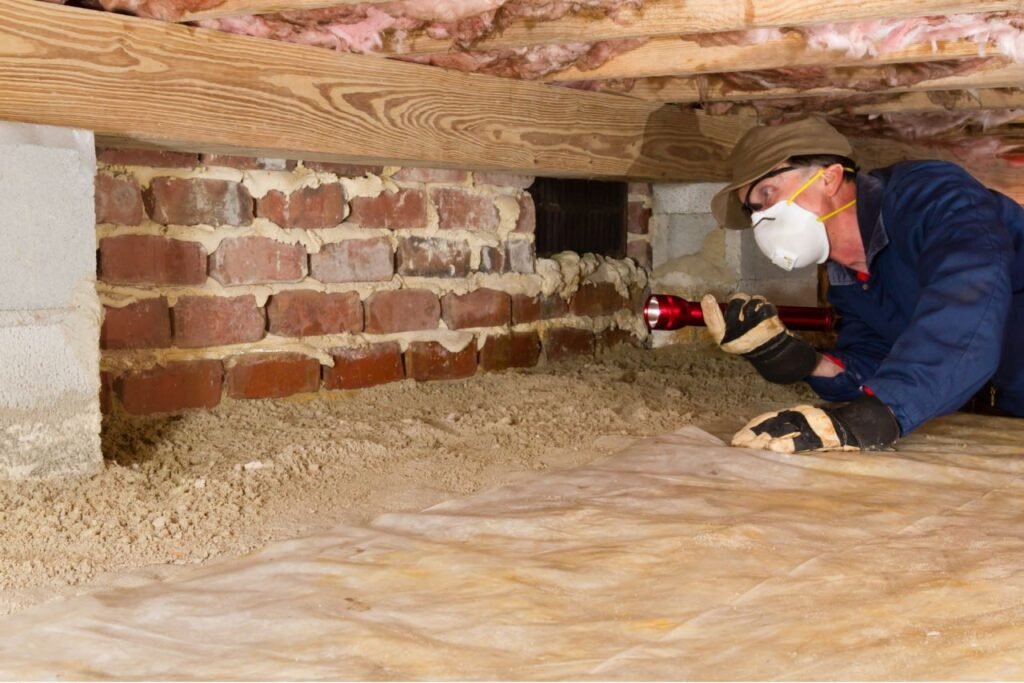
Financing Options For Crawl Space Foundation Repairs
Overview of Financing Options Available in NZ
When it comes to crawl space foundation repairs, the cost can be significant. Fortunately, several financing options are available in New Zealand to help homeowners manage these expenses. Here’s a look at some of the most common financing methods:
1. Personal Loans: Personal loans are a popular choice for financing home repairs. They offer a lump sum that can be used to cover the entire cost of the project. The repayment terms are usually flexible, ranging from one to seven years.
2. Home Equity Loans: If you have significant equity in your home, a home equity loan can be an excellent option. These loans allow you to borrow against the value of your home, often with lower interest rates compared to personal loans.
3. Credit Cards: For smaller repairs or immediate needs, using a credit card might be convenient. Many credit cards offer promotional periods with 0% interest, making them an attractive short-term financing option.
4. Government Grants and Loans: In some cases, you might qualify for government grants or low-interest loans designed to help with home repairs. These programs can provide substantial financial relief if you meet the eligibility criteria.
5. Financing Through Contractors: Some contractors offer financing plans directly to customers. These plans can be convenient because they often involve a simplified application process and competitive interest rates.
Pros and Cons of Each Option
Understanding the pros and cons of each financing option can help you make an informed decision:
Personal Loans
- Pros: Quick approval process, flexible repayment terms, no need to use your home as collateral.
- Cons: Higher interest rates compared to secured loans, the potential impact on credit score if payments are missed.
Home Equity Loans
- Pros: Lower interest rates, potential tax benefits, and the ability to borrow larger amounts.
- Cons: Risk of foreclosure if you default on the loan, longer approval process, requires substantial home equity.
Credit Cards
- Pros: Easy access to funds, the potential for 0% interest during promotional periods, no collateral required.
- Cons: High interest rates after promotional periods, can lead to high debt if not managed properly, and impact on credit score.
Government Grants and Loans
- Pros: Low or no interest, potential for significant financial assistance, government support.
- Cons: Strict eligibility criteria, lengthy application process, limited availability.
Financing Through Contractors
- Pros: Convenient, often competitive rates, streamlined application process.
- Cons: May have higher interest rates than other options, limited to specific contractors, less flexibility in choosing financing terms.
Tips for Selecting the Best Financing Method
Choosing the right financing option is crucial to managing the cost of crawl space foundation repairs effectively. Here are some tips to help you make the best decision:
1. Evaluate Your Financial Situation: Assess your current financial health, including your credit score, income, and existing debt. This evaluation will help you determine which financing options are available and affordable.
2. Compare Interest Rates and Terms: Look at the interest rates, repayment terms, and fees associated with each financing option. Use online calculators to compare the total cost of different loans over time.
3. Consider the Loan Amount: Ensure the financing option you choose can cover the full cost of the repairs. Home equity loans and personal loans typically offer higher borrowing limits than credit cards.
4. Read the Fine Print: Pay close attention to the terms and conditions of the financing agreement. Look for any hidden fees, prepayment penalties, or other charges that could affect the overall cost.
5. Seek Professional Advice: Consult with a financial advisor or mortgage broker to get personalized advice based on your unique situation. They can help you navigate the various options and select the best one for your needs.
6. Plan for Repayments: Choose a financing option with a repayment plan that fits comfortably within your budget. Avoid taking on debt that will strain your finances and lead to further issues down the line.
By carefully considering these factors, you can select the financing option that best suits your needs and ensures your crawl space foundation repairs are completed without undue financial stress.

Real-Life Case Studies
Real-Life Examples of Crawl Space Foundation Repairs in NZ
Case Study 1: Auckland Home Foundation Stabilization
In a suburban Auckland home, the homeowners noticed uneven floors and cracking walls. A thorough inspection revealed that the crawl space foundation was sinking due to poor soil conditions. The repair involved installing helical piers to stabilize and lift the foundation.
- Cost Details: The total cost of the project was $15,000, including labor, materials, and a detailed site evaluation.
- Outcomes: The home’s foundation was successfully stabilized, preventing further damage. The homeowners were relieved to see the cracks in the walls close up as the foundation was lifted.
- Lessons Learned: Investing in a detailed soil analysis before construction can prevent costly repairs in the future. The use of helical piers proved to be an effective solution for homes with unstable soil conditions.
Case Study 2: Wellington Property Moisture Mitigation
A Wellington property was experiencing excessive moisture in the crawl space, leading to mold growth and wood rot. The repair strategy focused on moisture mitigation by installing a vapor barrier and a dehumidification system.
- Cost Details: The repair cost amounted to $8,500, covering the installation of the vapor barrier, dehumidifiers, and additional drainage solutions.
- Outcomes: The moisture levels in the crawl space were significantly reduced, halting the mold growth and preventing further wood damage. The indoor air quality of the home also improved, creating a healthier living environment.
- Lessons Learned: Moisture control is critical in maintaining a healthy crawl space. Investing in preventative measures, such as vapor barriers and dehumidification systems, can save homeowners from extensive damage and health issues.
Case Study 3: Christchurch House Structural Reinforcement
In Christchurch, a homeowner faced structural issues in their crawl space foundation due to an earthquake. The repair involved reinforcing the foundation with steel beams and concrete footings to enhance the structural integrity.
- Cost Details: The comprehensive reinforcement project costs $22,000, including the materials, labor, and engineering assessments required to ensure safety.
- Outcomes: The reinforced foundation provided the necessary support to withstand future seismic activity. The homeowner felt a renewed sense of security, knowing their home was better equipped to handle earthquakes.
- Lessons Learned: In earthquake-prone areas, reinforcing the foundation is crucial for safety. Incorporating steel beams and concrete footings can significantly enhance the durability of a crawl space foundation.
These real-life case studies from Auckland, Wellington, and Christchurch illustrate the diverse challenges and solutions involved in crawl space foundation repairs in NZ. The cost details and outcomes of these repairs highlight the importance of addressing foundation issues promptly. From stabilizing sinking foundations to mitigating moisture and reinforcing structures, each case provides valuable insights and lessons learned for homeowners facing similar problems. Investing in quality repairs and preventative measures can ensure the long-term stability and safety of your home.

FAQs: About The Crawl Space Foundation Repair Cost In NZ
Conclusion
Understanding the costs associated with crawl space foundation repair is crucial for homeowners looking to maintain the structural integrity of their homes. It’s essential to emphasize the value of proactive maintenance and early repairs, as addressing issues promptly can prevent more extensive and costly damage down the line. By staying informed and taking timely action, homeowners can save significant amounts of money and ensure the longevity of their property’s foundation. If you suspect any issues with your crawl space, don’t hesitate to get it inspected and repaired by a professional. Taking these steps now can provide peace of mind and protect your investment in the long term.
About the Author:
Mike Veail is a recognized digital marketing expert with over 6 years of experience in helping tradespeople and small businesses thrive online. A former quantity surveyor, Mike combines deep industry knowledge with hands-on expertise in SEO and Google Ads. His marketing strategies are tailored to the specific needs of the trades sector, helping businesses increase visibility and generate more leads through proven, ethical methods.
Mike has successfully partnered with numerous companies, establishing a track record of delivering measurable results. His work has been featured across various platforms that showcase his expertise in lead generation and online marketing for the trades sector.
Learn more about Mike's experience and services at https://theleadguy.online or follow him on social media:
